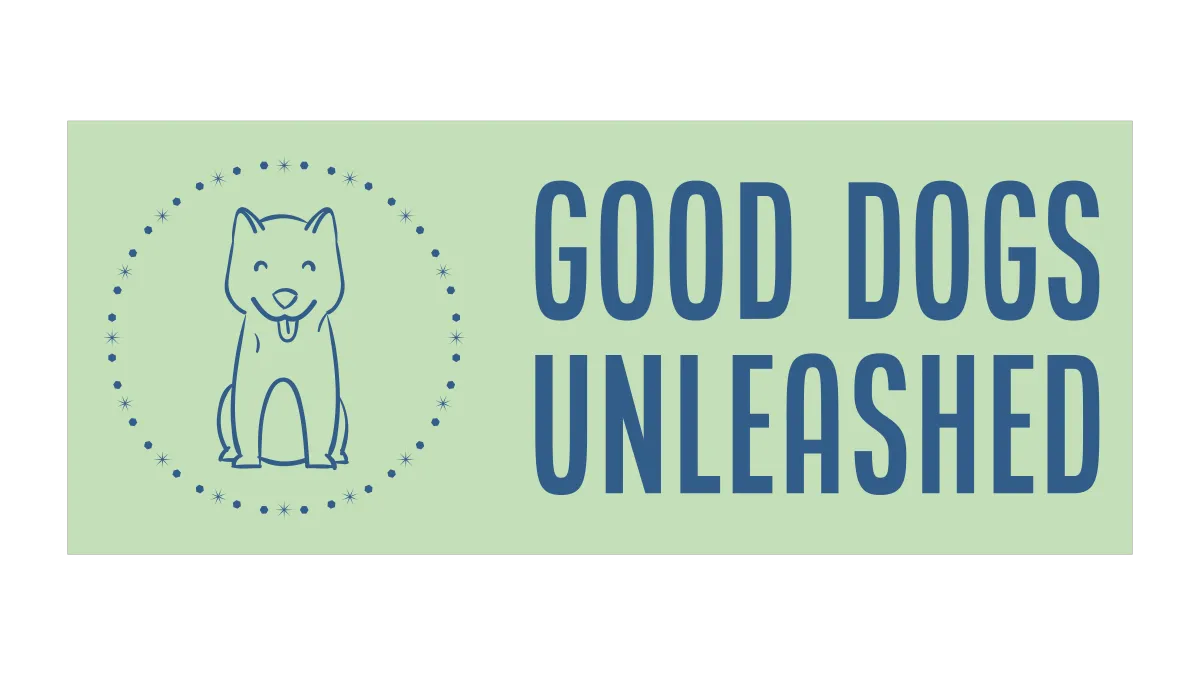Methodology
Methodology
You and your dog deserve the best, and that means the most up-to-date, evidence-based methods!
You and your dog deserve the best, and that means the most up-to-date, evidence-based methods!

I am a positive reinforcement-focused, force-free
dog trainer and there are two main reasons why:


My "I'm the boss" attitude was not working.
I started my dog career as a dog walker. Back in those days, I felt like dogs should do what I said because... well, they just should!
And ya know what? I was often frustrated with the results of that attitude. It turns out, "because I said so" means absolutely nothing to dogs (maybe this is obvious to you - it wasn't obvious to me!). I wasn't willing to use physical punishment to back up my insistence that they obeyed me (thank goodness) but I also wasn't willing to use food to motivate them. I felt like I shouldn't need a carrot, and I refused to use a stick. And you can see where that got me: nowhere!
Here's the simple truth: dogs do what works for them. Scientists have a fancy way of describing this phenomenon: "behavior has a function." Either the function is to get something they want or to avoid something they don't want. So I had to choose: either pick up the stick or get over my hang-up with the carrot.
Once I realized that those were my options, the choice was clear. Because when I sat down and looked at it, I never truly believed that humans have a right to control other animals, especially when that control erodes their well-being or exploits them. I deeply believed the opposite - that when we are at our best, we are stewards that create humane, high-quality lives for our pets.
So if I could learn effective ways to use the carrot (and that seemed like a big "if"), I was willing to try it. And guess what? When I did that, I learned that what I feared all along - that I was going to become some wilting doormat at the hands of dogs - was totally wrong. Dogs never wanted to dominate me - they wanted to have fun and eat hot dogs. And once I learned how to collaborate with dogs using fun and hot dogs, my results got significantly better.
So you might be thinking, is it really so bad to use the carrot and the stick? It turns out that punishment is stressful, and that's a serious problem because...


Stress is the root source of most serious behavior problems.
We used to think that behavior challenges in dogs were primarily caused by dominance. In other words, we thought that "bad" dogs had an attitude problem and they wanted power over us. If that's your perspective, it makes sense that you'd focus on punishment to help the dog see that you're the one with the power.
But did you know that the dominance theory has been debunked?* Modern science now understands that stress - in one form or another - is the root source of almost every significant behavior problem we see in modern dogs.** This is especially true for aggression, which is most commonly caused by fear, pain, or other medical problems.
So it turns out that - yes, we can use pain to train a perfect heel or recall. But there is a significant likelihood of causing "fallout," a fancy term for "more serious behavior problems than you started with." Imagine entering training with an over-enthusiastic dog and leaving with a dog that displays aggression toward humans - no thanks!
Meanwhile, if you enter training with a dog that is already displaying aggressive behaviors, you can choose to punish them on the theory that it'll make the dog less dominant. In reality, punishment will only exacerbate the true underlying causes of the aggression (often fear, pain, or medical problems) and make it worse.
When the stick turns out to have some pretty gnarly risks attached, the carrot begins to look pretty good!
Let's do a thought experiment:
I want you to make me a cup of coffee every day, but I can't speak to you. I can either demonstrate what I want and then give you a $5 bill when you correctly follow my demonstration OR I can poke you with a butter knife any time you get further from the coffee maker.
Which way will help you learn to make coffee faster?
Which way is likely to result in a better working relationship long term?
Which way reflects a relationship founded on respect and care?
Which way is more likely to result in you committing an act of aggression against me?
If you shove the knife out of my hand, does that mean you're being "dominant" toward me?
If you quietly accept the knife poking you until you finally figure out what I want, does that make you a "good" person?
Modern dog training is founded on the simple observation that, just like with people, dogs learn better when they are in safe, healthy, constructive learning environments. The likelihood of serious negative consequences (like aggression) is significantly lower and the respect we use in teaching our animals enriches our relationship with them.
* The "alpha dog/dominance" myth originated from Rudolph Schenkel's 1947 study of a group of unrelated wolves that were living in captivity, titled "Expressions Studies on Wolves." Professionals across many animal science fields have noted that his findings apply neither to wolves living in the wild nor to domesticated dogs living in mixed human/dog family structures. Some discussions of this point, from a wolf behavior researcher, a domesticated dog trainer, a rescue organization, and a veterinarian:
"Alpha Status, Dominance, and Division of Labor in Wolf Packs," by L. David Mech, the original scientific article that debunked the alpha myth directly, published in 1999.
"Debunking the “Alpha Dog” Theory," a discussion of the transition from dominance theory to modern training methods by world-renowned dog trainer, Pat Miller, in Whole Dog Journal in 2011.
"Alpha Dogs and Dominance Theory: Fact or Fiction?" by Chelsea Jones of the Animal Welfare League of Arlington
"The Myth of Dominance and the Alpha Dog – Not True!" by veterinarian Dr. Karen Louis
** If this sentence piques your curiosity, I highly recommend the book "The Stress Factor in Dogs" by Dr. Kristina Spaulding.
What does force-free training look like?
A complete manners training program is made up of multiple elements:
During the preparation stage, we consider and make adjustments for:
Medical and nutritional needs (carrying out guidance from your vet and asking them questions, if needed)
Physical and mental enrichment needs
Breed-specific enrichment needs
Developmental stage and development-related needs
A deep dive into the dog's known history, from birth to the current moment
We set goals that are:
Realistic given the dog's age, breed, medical status, and history
Consistent with high quality of life for both the dog and the humans
We take action to:
Meet all of dog's needs (if any are unmet)
Teach the dog manners using positive reinforcement
Prevent the practice of unwanted behaviors (since many unwanted behaviors are reinforcing on their own, we need to prevent the dog from doing them!) and positively reinforce alternative behaviors, if needed
A complete behavior modification program includes all of the above, plus:
Discussing the behavior with either your vet or a veterinary behaviorist so we can assess potential medical causes and, in some cases, consider therapeutic behavior medication to help the dog feel safe enough to learn
Creating a safety plan to do everything we can to ensure that the dog does not bite or otherwise harm anyone, and that the dog is safe
Identifying underlying causes of unwanted behavior
Identifying what needs are being met by the unwanted behavior and meeting those needs in appropriate ways
Choosing and implementing gentle behavior modification protocols to change the underlying cause of the behavior (ie. treating the cause, not just the symptoms!)
Manners or Behavior Modification?
Probably both! Manners training programs are focused on teaching the dog helpful behaviors like down, stay, or loose leash walking. Behavior modification programs are focused on addressing behaviors that are not working for us, such as leash reactivity, resource guarding, overly rough play, and much more!
Most of my custom training programs include both.
The exceptions are on the extremes: brand-new puppies rarely have concerning behavior problems (but not never!) and dogs with severe behavior/emotional concerns (such as severely fearful dogs) may need a period of help feeling safe before asking them to learn specific manners.
Ready to get started?
Ready to get started?




Hours:
Thursday-Monday:
11am-7pm
Tuesday & Wednesday:
Closed
